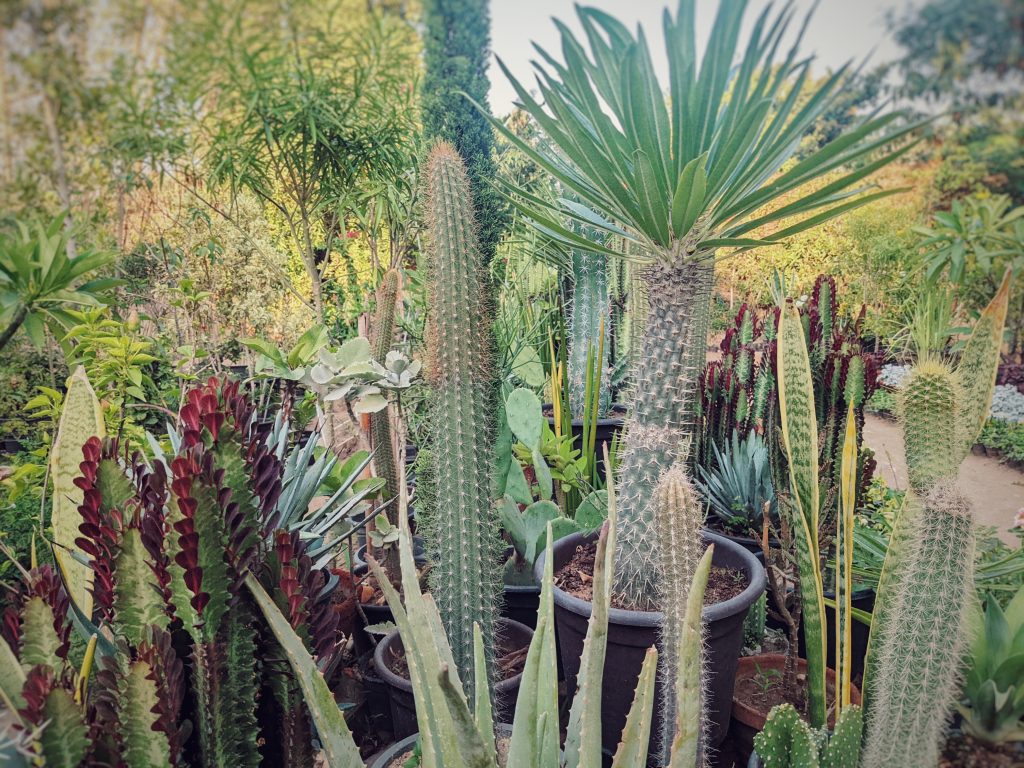Amid the unforgiving density of Cairo, few flashes of green emerge from the overwhelmingly grey concrete and red brick canvas. Unlike the lush banks of the Nile to the south or the verdant fields in the Delta to the north, Cairo like many cities across the Middle East and North Africa have been sternly uprooted, along with their people, from a not so distant pastoral past before rapid industrialisation and blossoming populations created the metropolitan we know today.
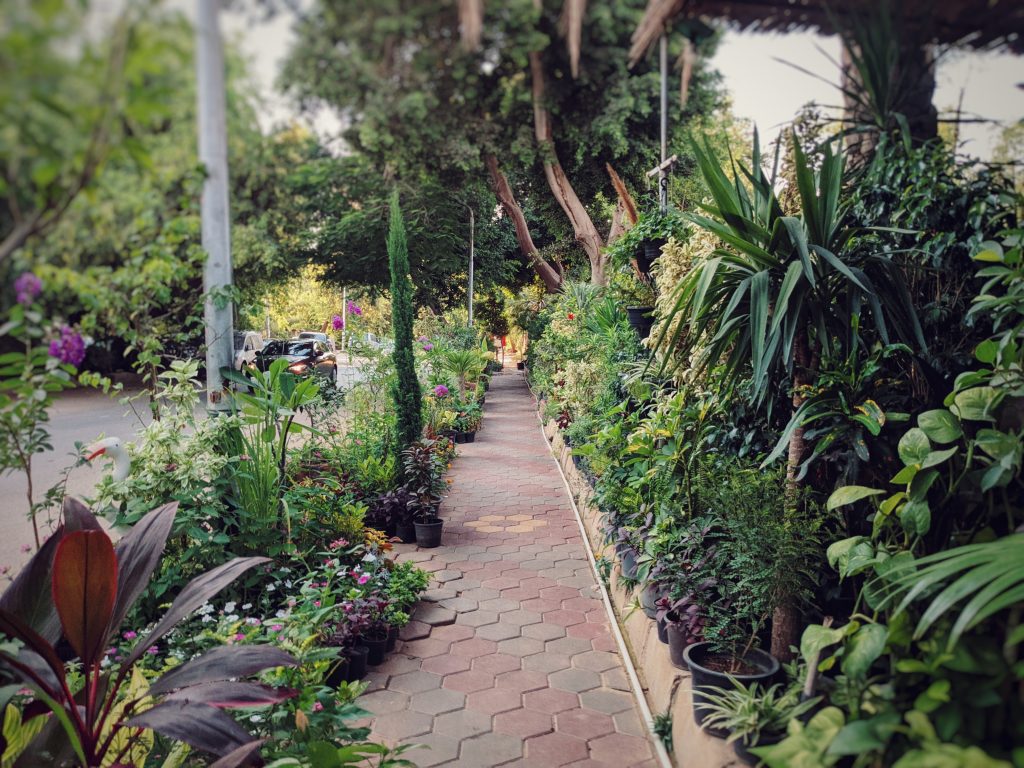
But across the region today is a renewed urge to return cities to their greener pasts, spearheaded by everyday citizens establishing their own small gardens on balconies, windowsills, and even on rooftops as green oases amid increasingly stifling urban centres. However, this is no easy or quick task, or as according to George Elliot, ‘It will never rain roses; when we want to have more roses, we must plant more trees’.
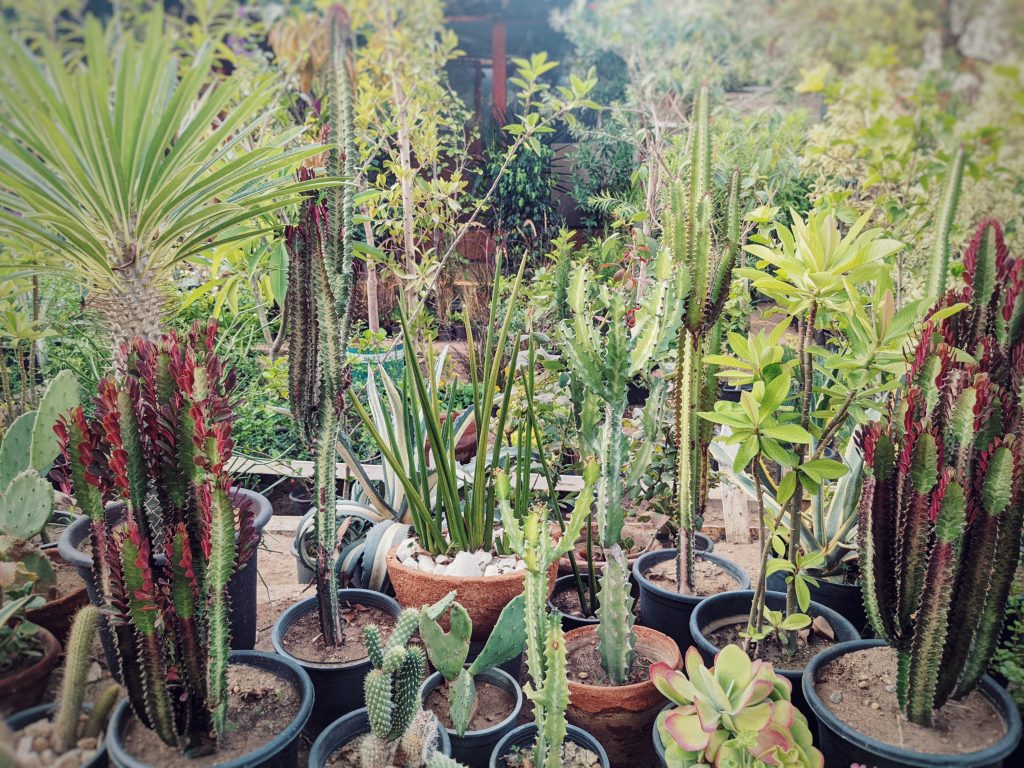
Having your own humble garden on your balcony or even just a few plants on your windowsill requires a surprisingly large amount of dedication, care, and necessary failures on the way as you learn the ins and outs of gardening. On this point, the American cartoonist Lou Erickson once noted, ‘gardening requires lots of water—most of it in the form of perspiration.’
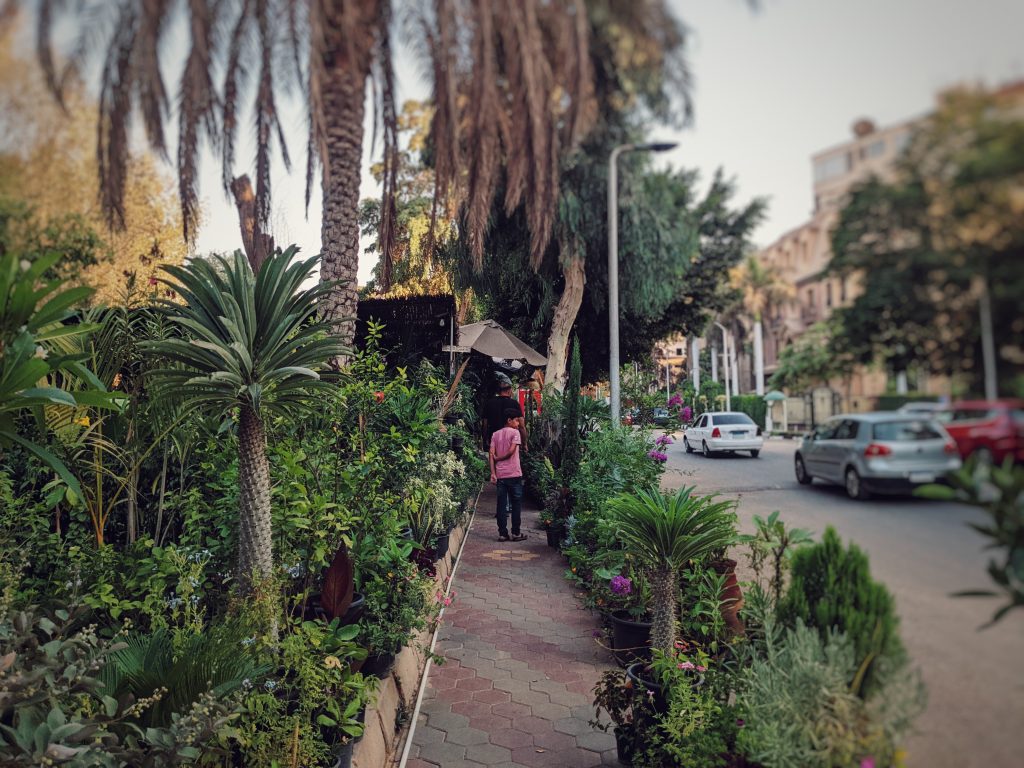
This is true no more so than in the hot, arid, and often difficult climates of the Middle East and North Africa, as plants can easily often wilt and die if not properly watered or in the wrong lighting conditions. To get a better idea of what plants work best where for those in the region looking to go green, we spoke with the plant nursery El-Rahman in the Cairo neighbourhood of Maadi.
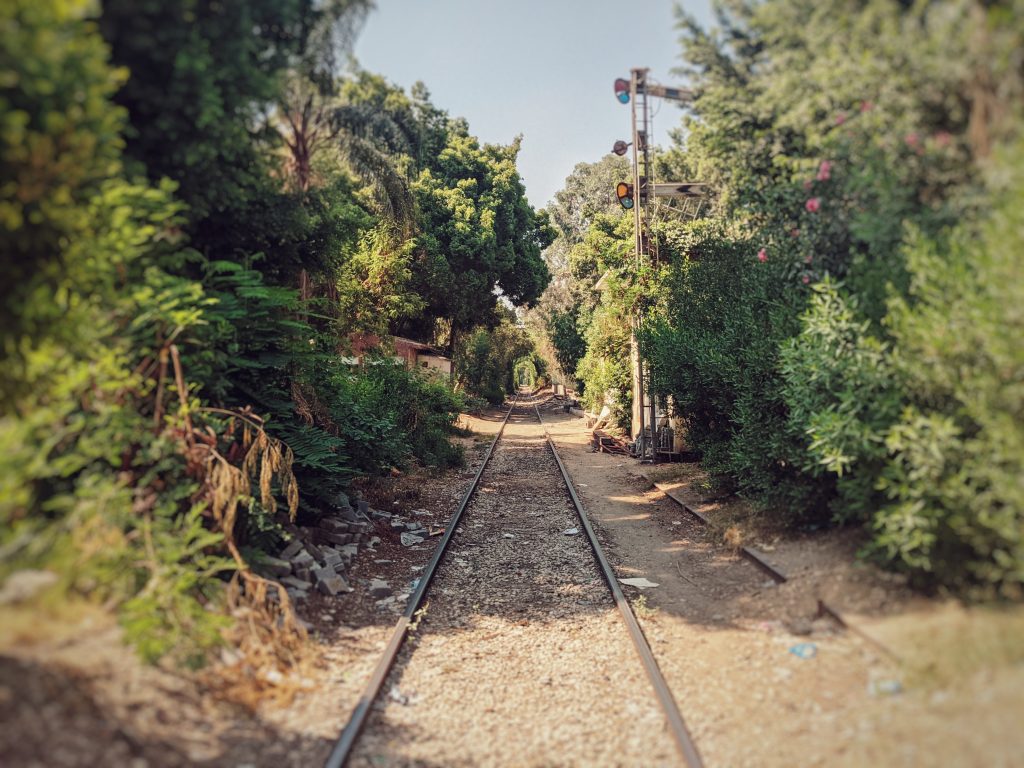
Along an old railway line once connecting Tora to Cairo’s historic centre, which has now been mostly enveloped by the city’s maze of highways and residential developments, sits a green passage through the neighbourhood of Maadi. Trees on either side tower over and enclose the barely-used railway in a green tunnel separated from the rest of the city. Beside this green and calm stretch, Mohammed and his father, Abdullah, run Mashtel El-Rahman, one of the many plant nurseries that line this small verdant escape from the city.
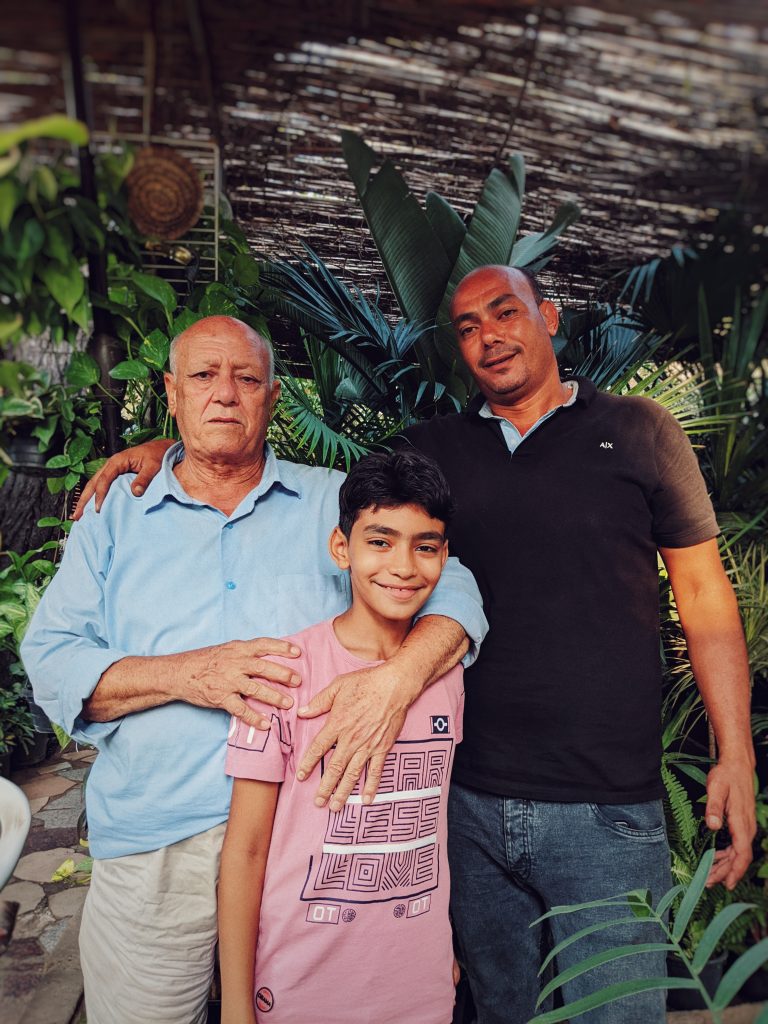
Mohammed, clearly proud of his family’s establishment, told me how his father had relocated the plant nursery from elsewhere in Maadi to along the railway over twenty years ago. Since then, he explained that they and other plant nursery owners had prevented this little-used stretch of railway from becoming a place to dump trash, and instead helped create a green artery through the Cairo, admired and enjoyed by the public.
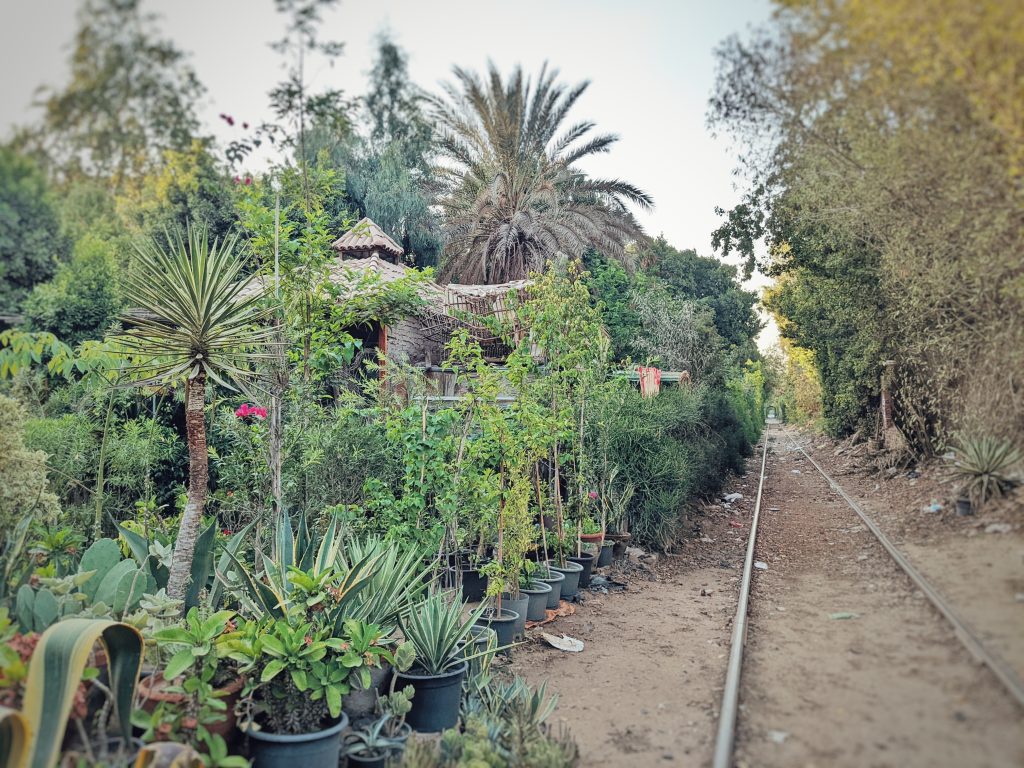
The vast array of plants in all shapes, sizes, and colours at Mashtal El-Rahman is matched by the great knowledge of those who work at the shop, pertaining to every plant’s water, soil, and sun light needs. We walked around the plant nursery with Mohammed to get a breakdown of what plants work where for those living in hot Middle Eastern climates for those tempted to get into gardening in the region.
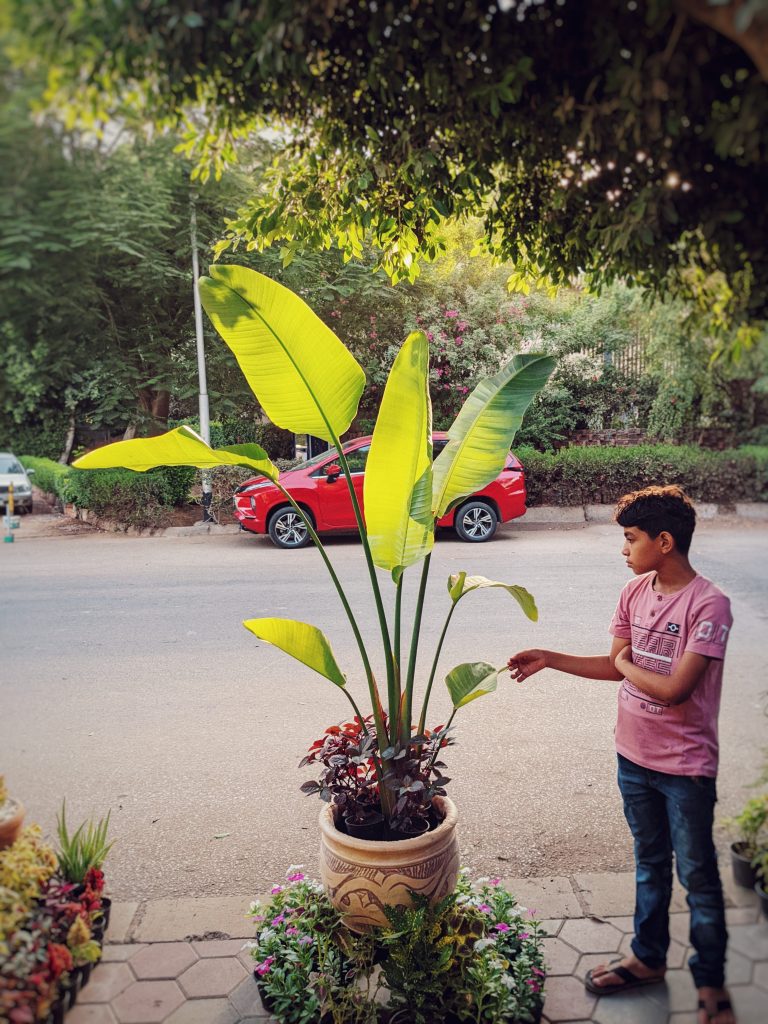
House plants
For living rooms, bedrooms, and even gardens, houseplants are a great way to brighten up a space. Houseplants can also help filter out pollutants from the air and create a much healthier environment for you to enjoy. The following plants are a selection of plants that work well for indoor areas with not much sunlight in hot Middle Eastern climates.
Pothos
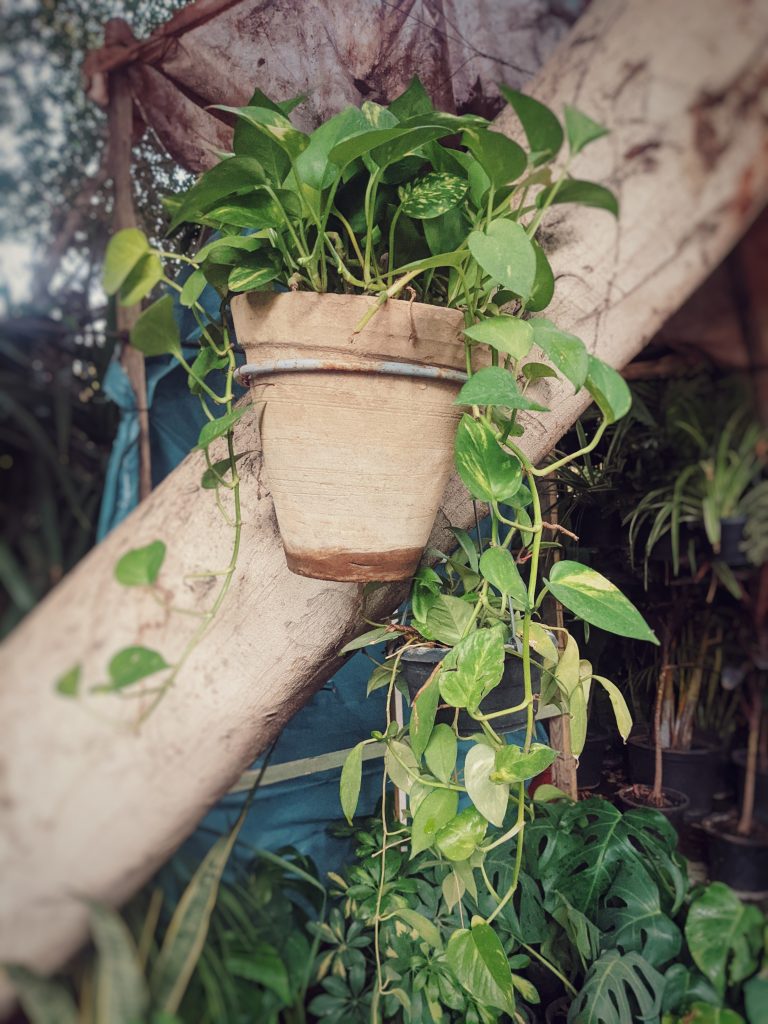
Pothos, also known as the devil’s vine due to its stubbornness to die, is one of the easiest plants to grow in low-light conditions. Native to the South Pacific island of Mo’orea, pothos has now become naturalised throughout many tropical regions of the world and is an incredibly popular houseplant the world over due to it being one of the few plants to maintain a vibrant green colour in low-light conditions and persistence to survive however many times you forget to water it.
Spider plant
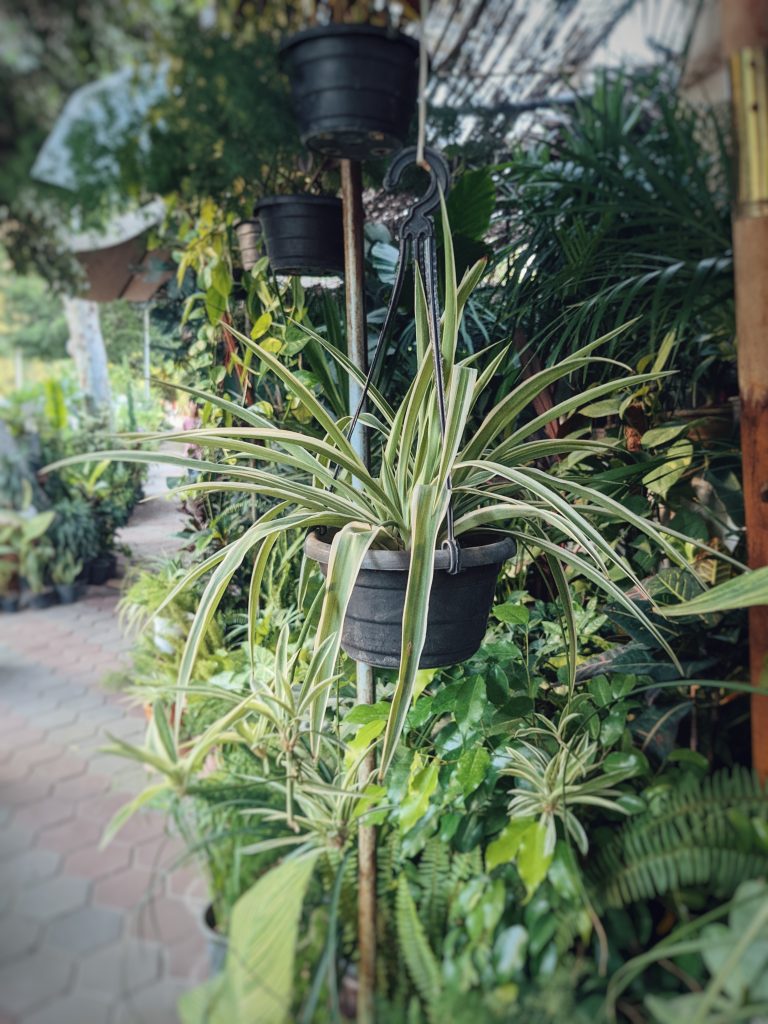
With its characteristic long leaves stretching out like spider legs giving the plant its name, the spider plant is an incredibly easy plant to grow that can undergo a lot of neglect and deal with both being inside or in a mostly shaded balcony. Native to the south of Africa, the plant has some attractive small flowers that come out for a few months a year. In addition to being an obvious choice for beginner gardeners, the plant has also been praised by the NASA Clean Air Study for being very effective at removing toxins from indoor air.
Areca palm
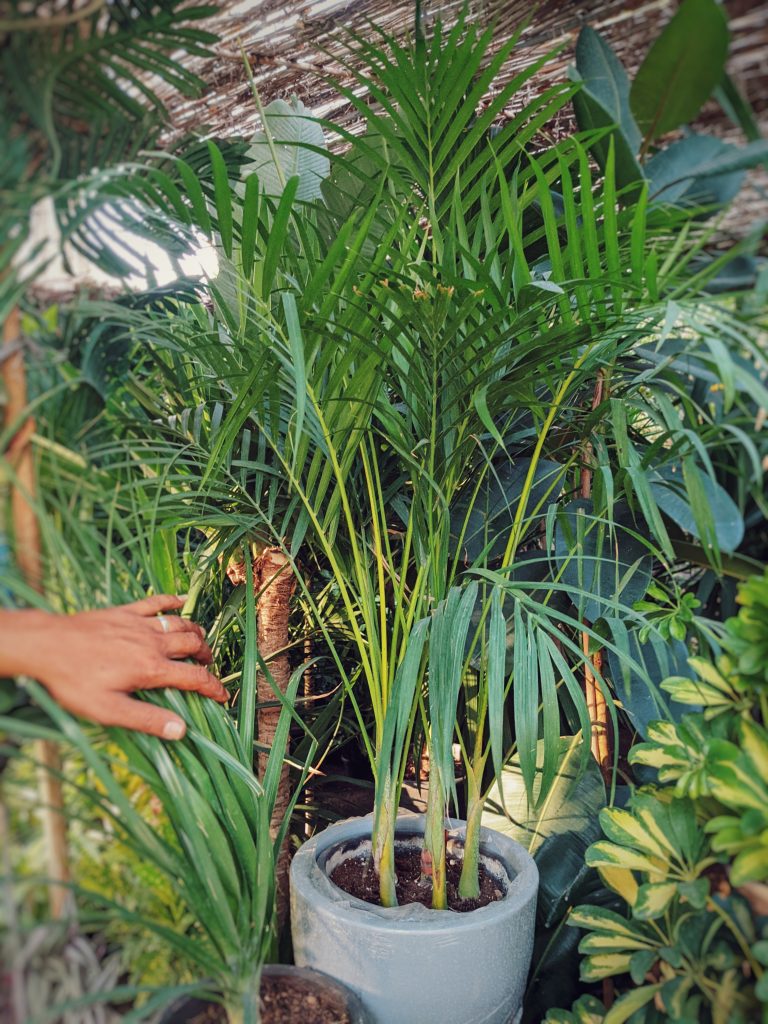
The areca palm is a perfect indoor plant for those looking for a large plant to furnish their bedroom or living room. Needing little light and being relatively hardy, the areca palm is a difficult plant to kill and makes for an impressive centre piece in any room. Also known as a golden cane palm and butterfly palm, the areca palm can also manage well on semi-shaded balconies in a pot or in a garden planted under the shade of a tree.
Snake plant
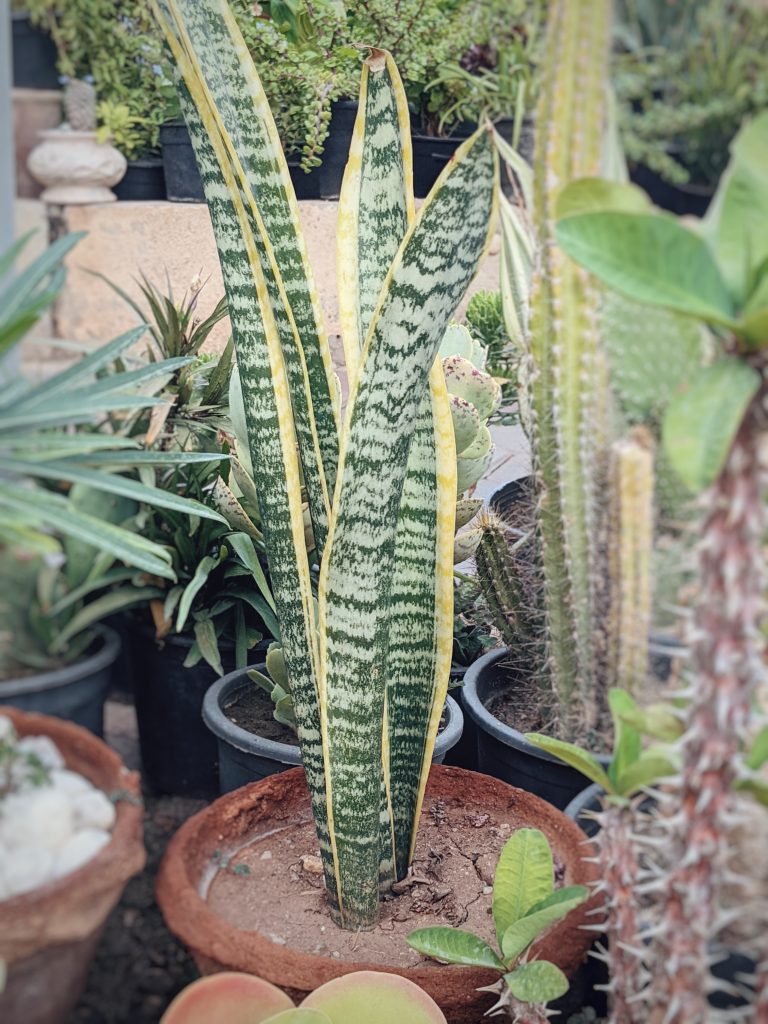
The snake plant is also known by its official species name of Dracaena trifasciat and in some countries is amusingly called mother-in-law’s tongue. The plant is an extremely hardy plant native to West Africa that can grow potted inside with very little late, but also does quite well outside in moderate sun, even planted in the ground. Provided you don’t overwater it, the snake plant is a perfect beginner plant that is very difficult to kill.
Umbrella tree
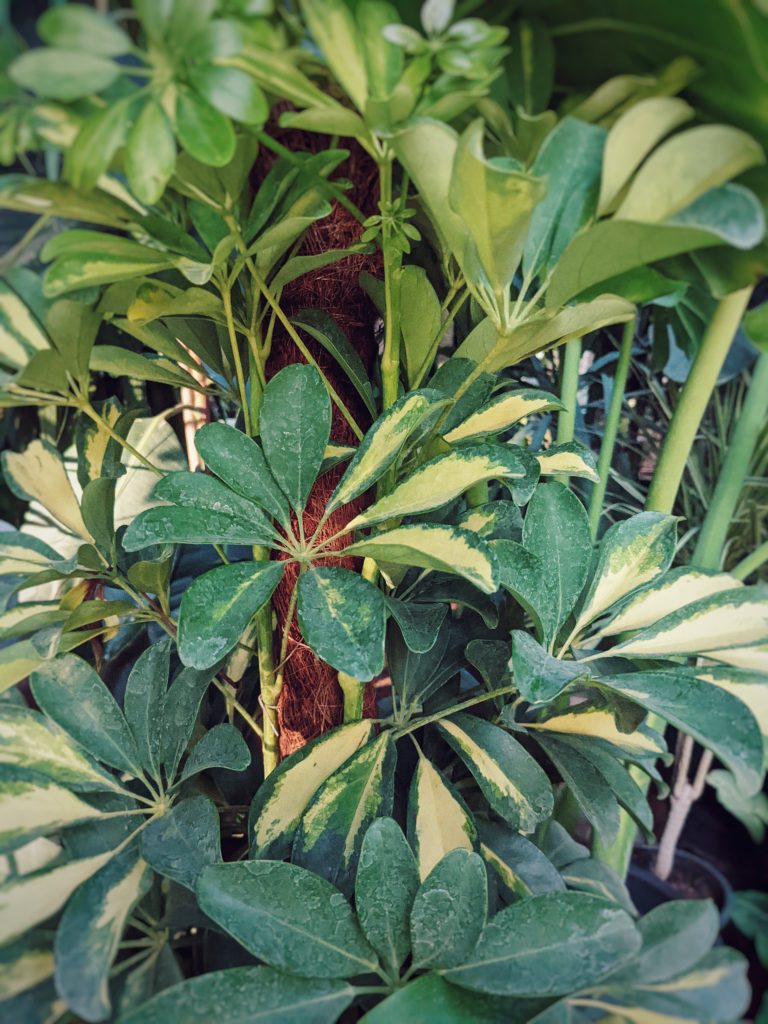
The umbrella tree is native to certain parts of China, but has now become a popular houseplant the world over due to its ability to grow in relatively low-light conditions. While direct sunlight can often burn the leaves, if you keep it inside or in a heavily shaded balcony with indirect light, the umbrella tree is a great plant for budding gardeners.
Peace lily
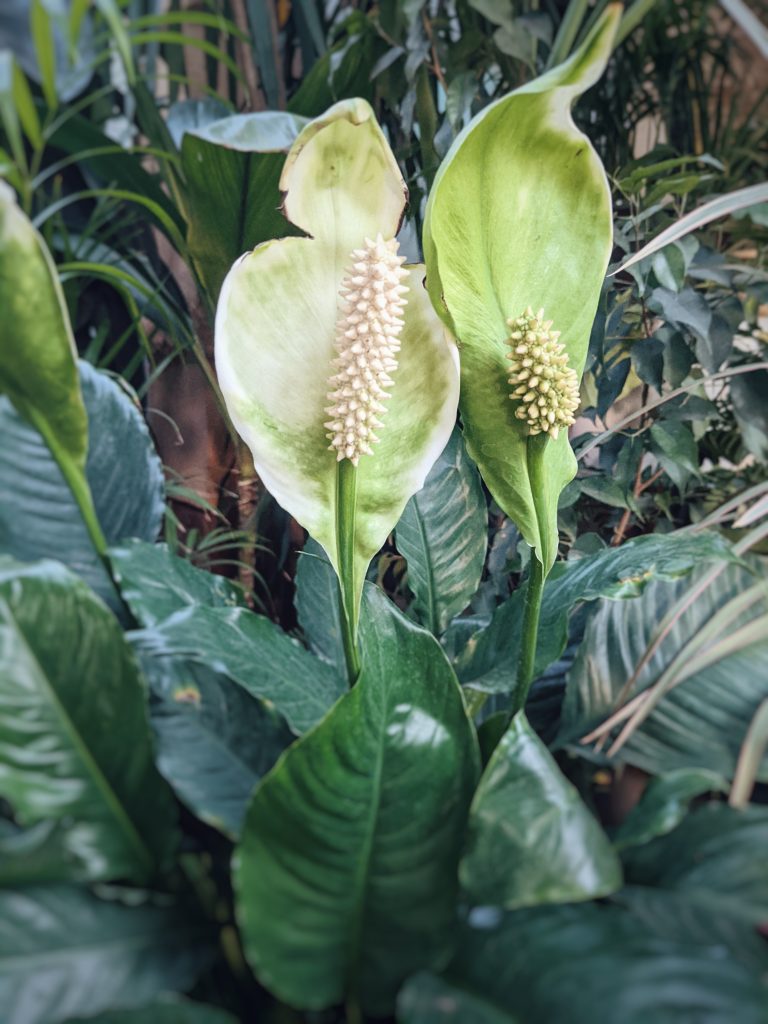
The peace lily is a fond favourite of those who otherwise struggle to keep plants alive. Also known by its Latin genus name Spathiphyllum, the peace lily barely needs any water or light to survive and is perfect for low-light settings. The peace lily supposedly received its name due to the association of the colour white with peace, as shown by a white flag to indicate a truce.
Baby rubber plant
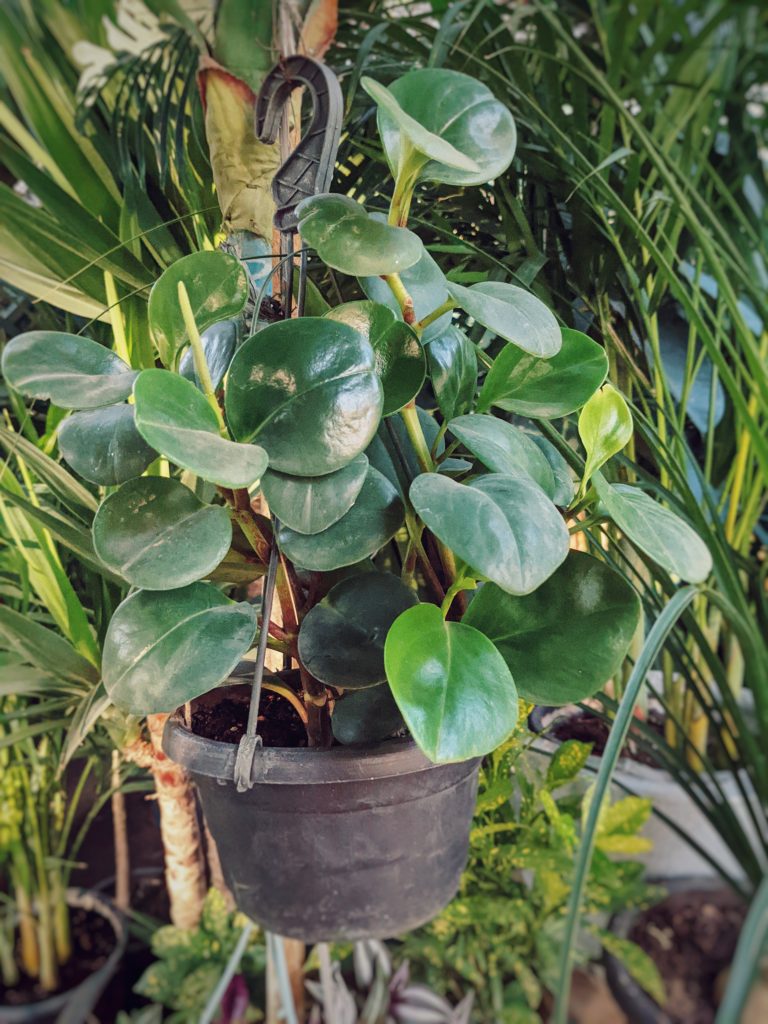
The baby rubber plant, also known as Peperomia obtusifolia, is a central American native that grows incredibly well indoors and in heavily shaded balconies in the Middle East. Provided you keep it watered when the soil is dry and keep it out of direct sun, the baby rubber plant is pretty hard to kill and is a great plant for those looking to get into gardening.
Dragon tree
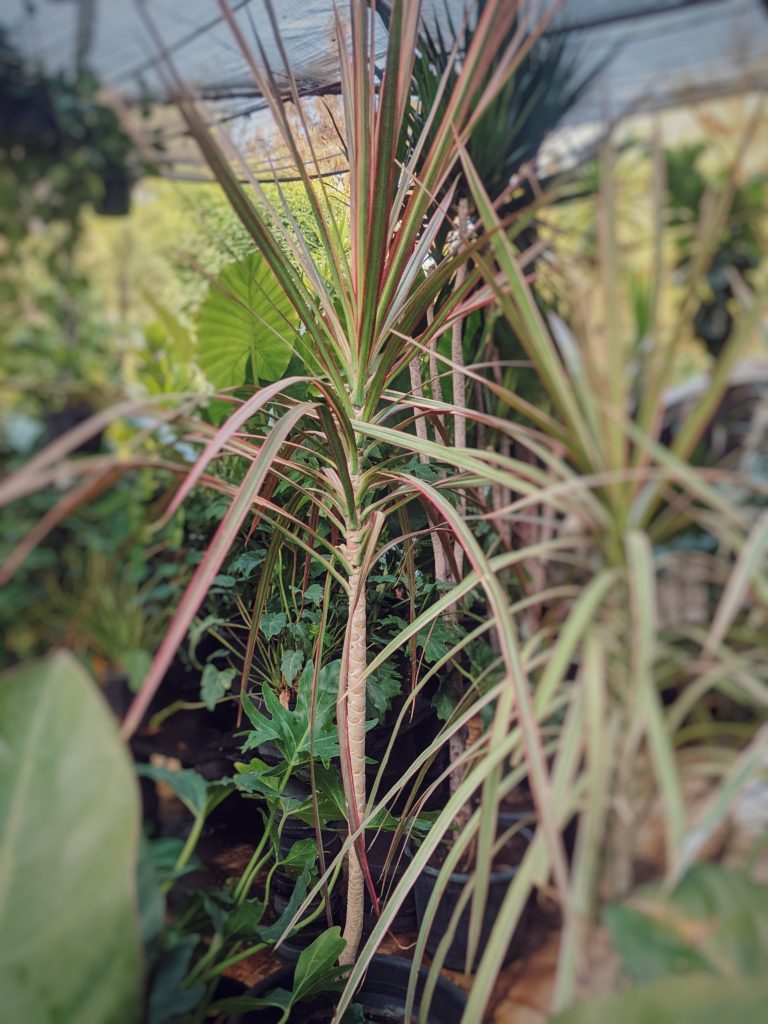
This attractive plant with its long red-edged leaves is a very easy houseplant to maintain, needing little water and not much sunlight to flourish. Dragon plants can grow up to an impressive six foot and maintain a year-long attractive appearance as long as they are kept out of direct sunlight, which can burn the leaves and stunt growth.
Swiss cheese plant
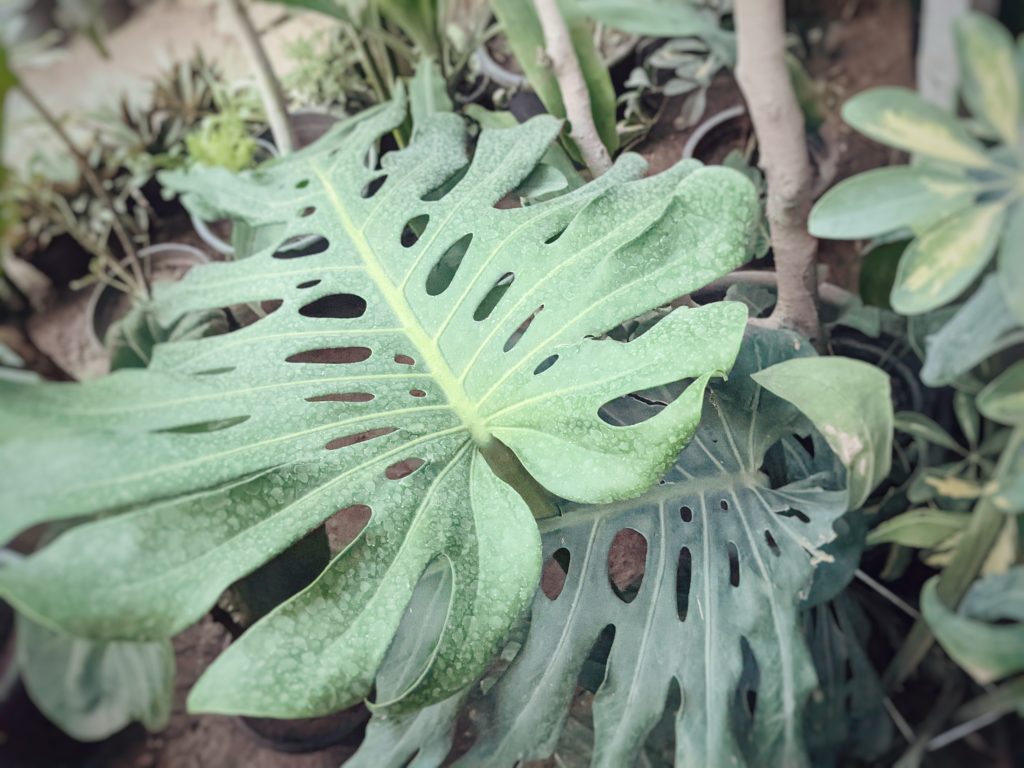
Named after Swiss cheese due to the holes spread along its leaves, the Swiss cheese plant is an impressive looking plant that does very well in indoor climates in the Middle East. Also known as delicious monster, the Mexican native grows quickly but can burn if exposed to direct sunlight.
Semi-sunny balcony plants
For balconies that are mostly shaded from direct sunlight but still experience the heat of Middle Eastern climates, the following plants are great options to lively up your balcony.
Elephant’s ear
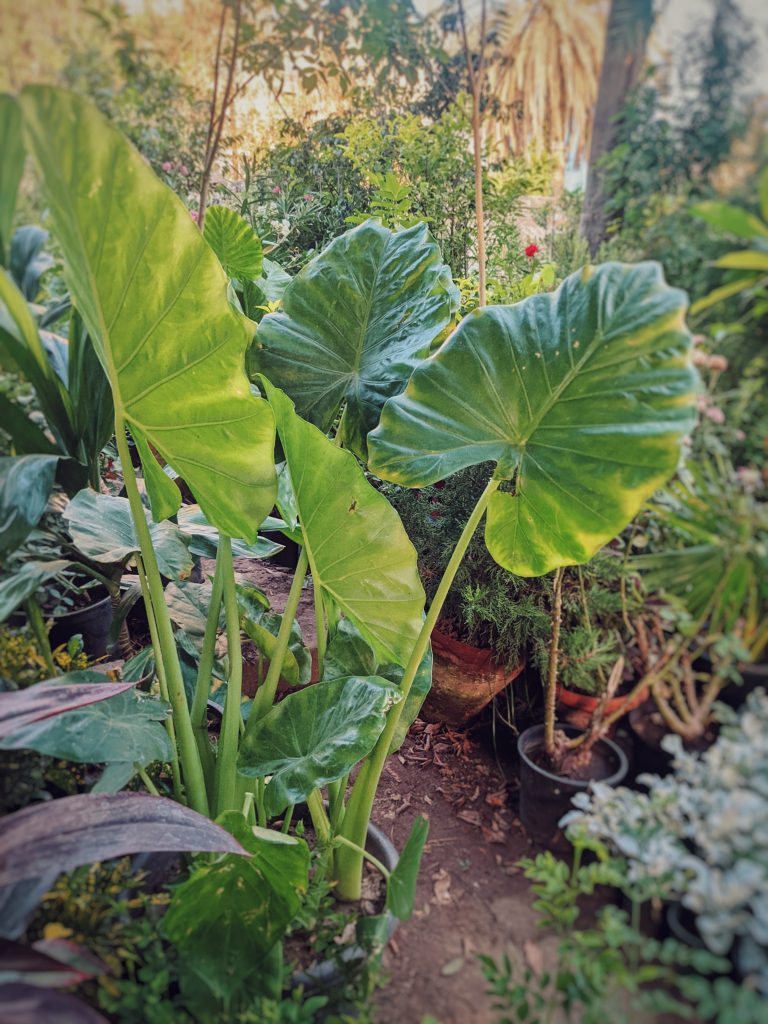
Named elephant’s ear due to it large leaves that resemble the ears of elephants, the plant is native to Asia and in particular India, making it highly suitable for the hot Middle Eastern climates provided its not in direct sun for the majority of the day.
Good luck plant
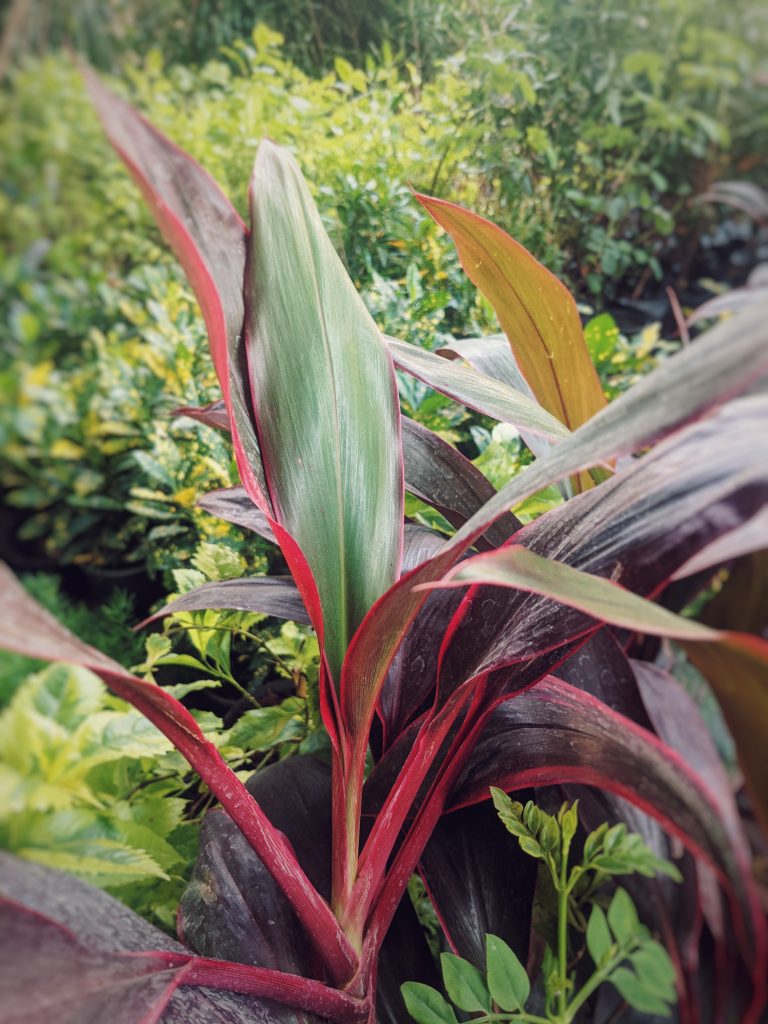
The good luck tree’s dark purple leaves makes this plant an attractive and striking addition to your balcony or well-lit room. Also known as the ti plant, the good luck plant is native to the Pacific island of Hawaii and as such enjoys the hot weather. However, this plant needs to be placed away from harsh direct sunlight, be it in a shaded balcony or in a bright room.
Aloe vera
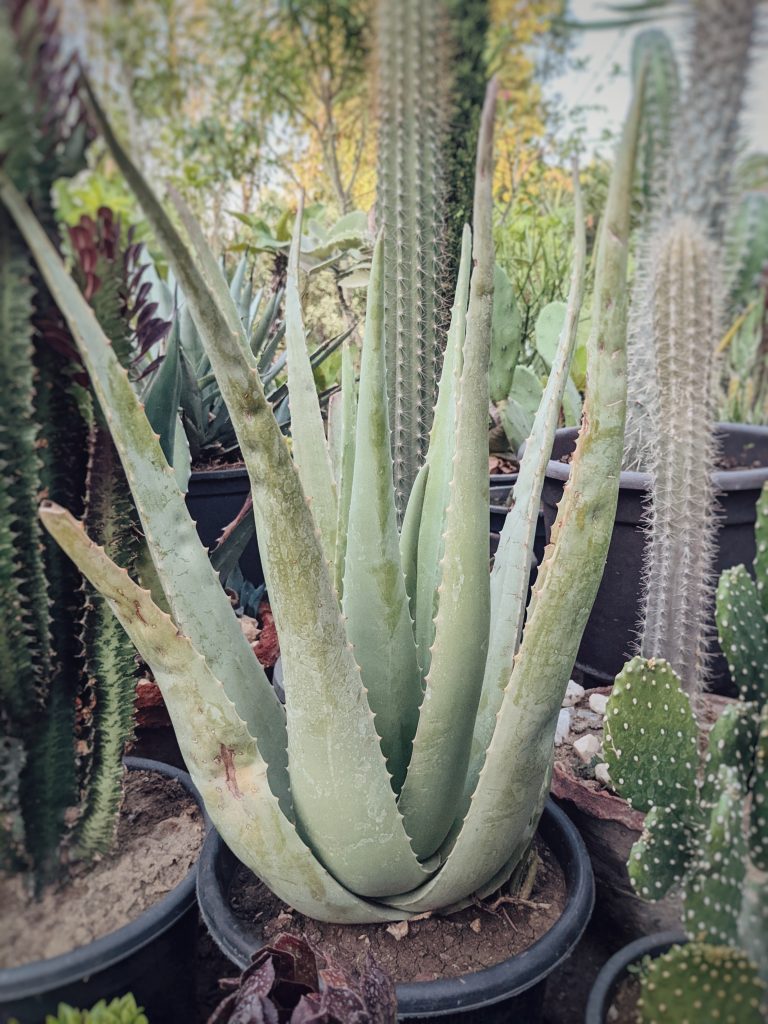
Aloe vera is as easy to grow as it is useful. Used for cleansing face masks, soothing sun burn, among many other uses, having some healthy aloe veras in your garden is a great idea. Classed as a succulent, aloe vera is particularly good at soaking up all the moisture it can and storing it away. This is why aloe vera is such a sturdy plant and has been a favourite of budding gardeners who struggle to keep their plants alive. However, although the plant is thought to be native to the Al Hajar Mountains of Oman, aloe vera can struggle in the harsh Middle Eastern sun, so make sure to place your aloe vera in a place that doesn’t have direct sunlight all day and don’t overwater.
Sago palm
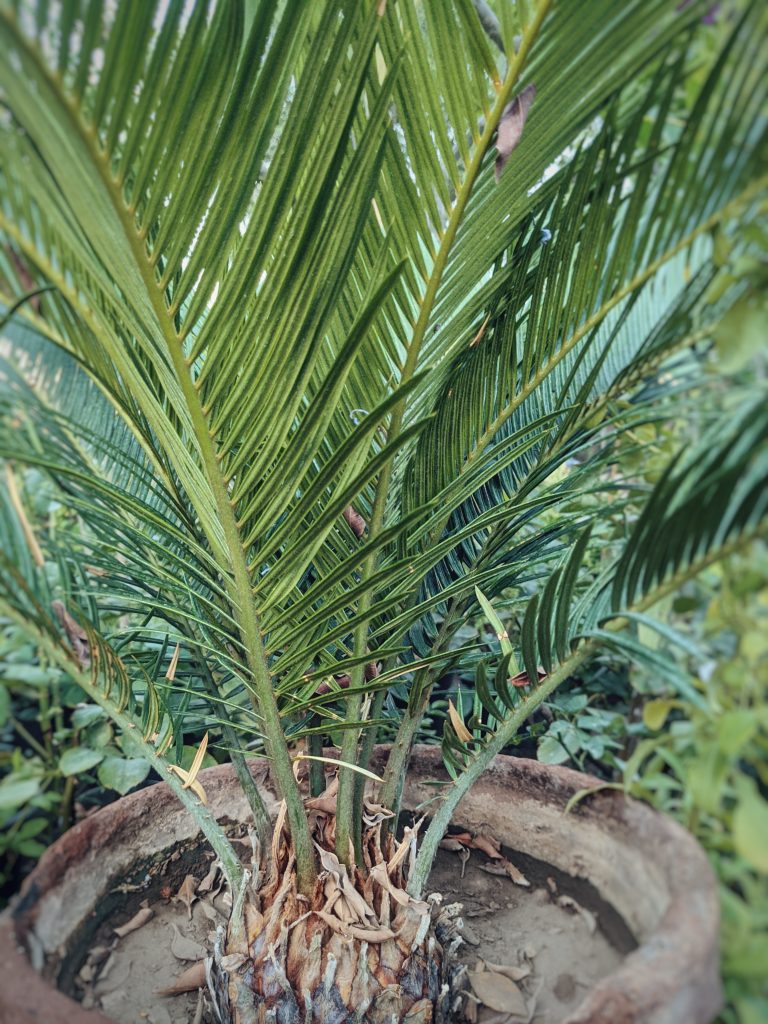
The sago palm, also known as the cycad palm, is a great tropical-looking plant for shaded areas. Native to Japan, the sago palm’s leaves can easily get sunburnt in direct sunlight, so be sure to be careful where you place this in your balcony or garden. These slow growing plants do very well in pots and can even be grown inside in a sunny room.
Desert cabbage

The curiously named desert cabbage, also known as the paddle plant, is an attractive looking succulent whose colours change throughout the year, turning a beautiful reddish pink in the winter months. While the plant needs sun, long periods of bright direct sun can burn the leaves.
Sunny plants
For sunny balconies or gardens in the Middle East that have long stretches of scorching sun, the following plants are perfect to additions to add a little colour and texture.
Hibiscus
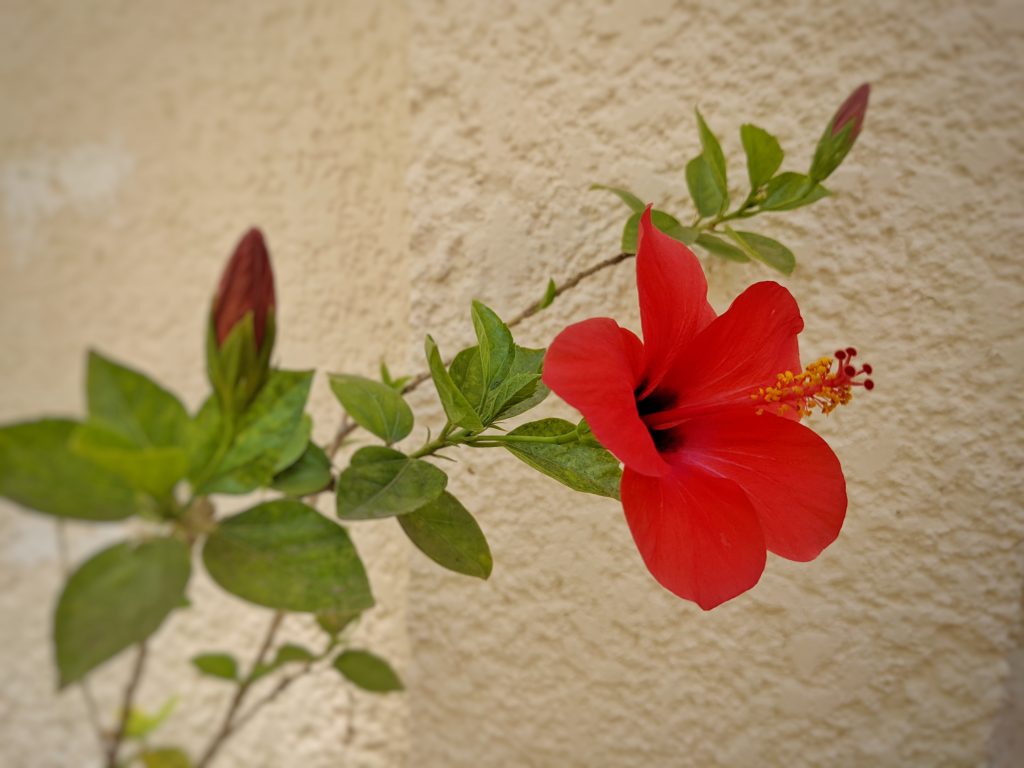
Hibiscus, also known in Arabic as karkidih, regularly produces surprisingly beautiful flowers throughout the summer months. The hibiscus flower is famously worn by native Hawaiian women on either the left or right ear to indicate if they are in a relationship or single, respectively. Provided decent drainage, hibiscus is a relatively easy plant to keep provided you manage to keep it well watered.
Indian jasmine
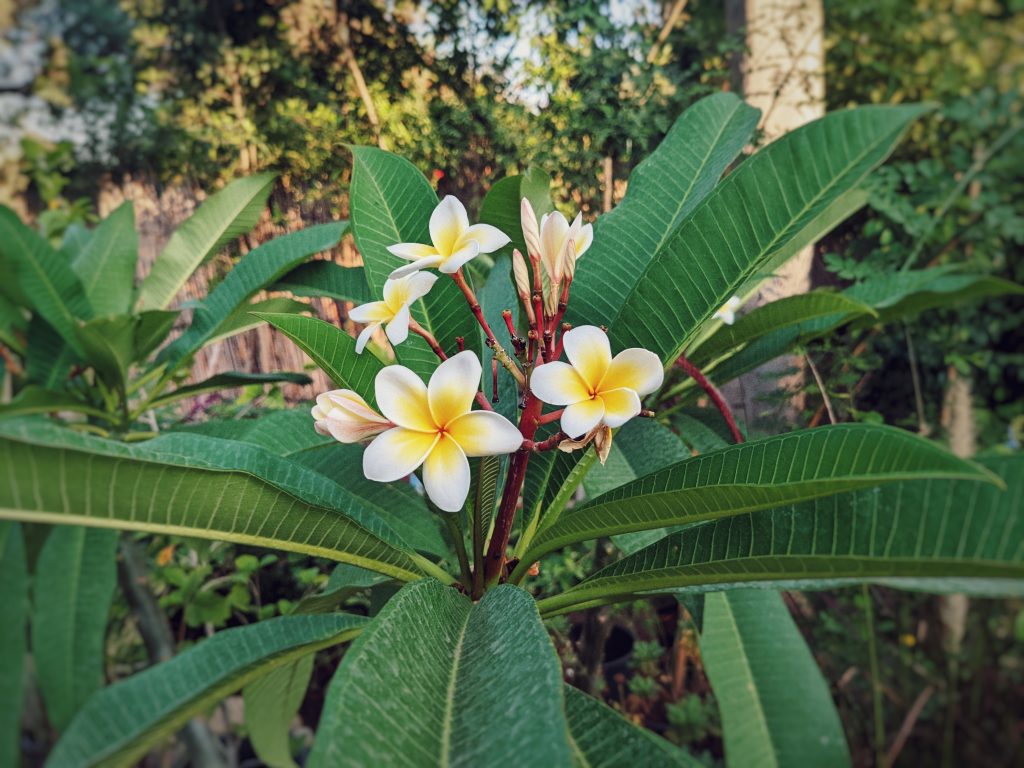
Indian jasmine, which is also commonly known as frangipani, is an impressive tropical-looking tree that grows incredibly well in Middle Eastern climates and has delicate flowers that produce a beautiful smell, which are oddly most pungent at night. This hardy plant loves all-day sun, but should be watered well and be in well-draining soil. While the Indian jasmine is an impressive-looking plant in the summer and spring months, once winter comes, however, it loses it leaves and flowers as appears as an awkward-looking skeleton for several months before again coming into bloom.
African milk tree
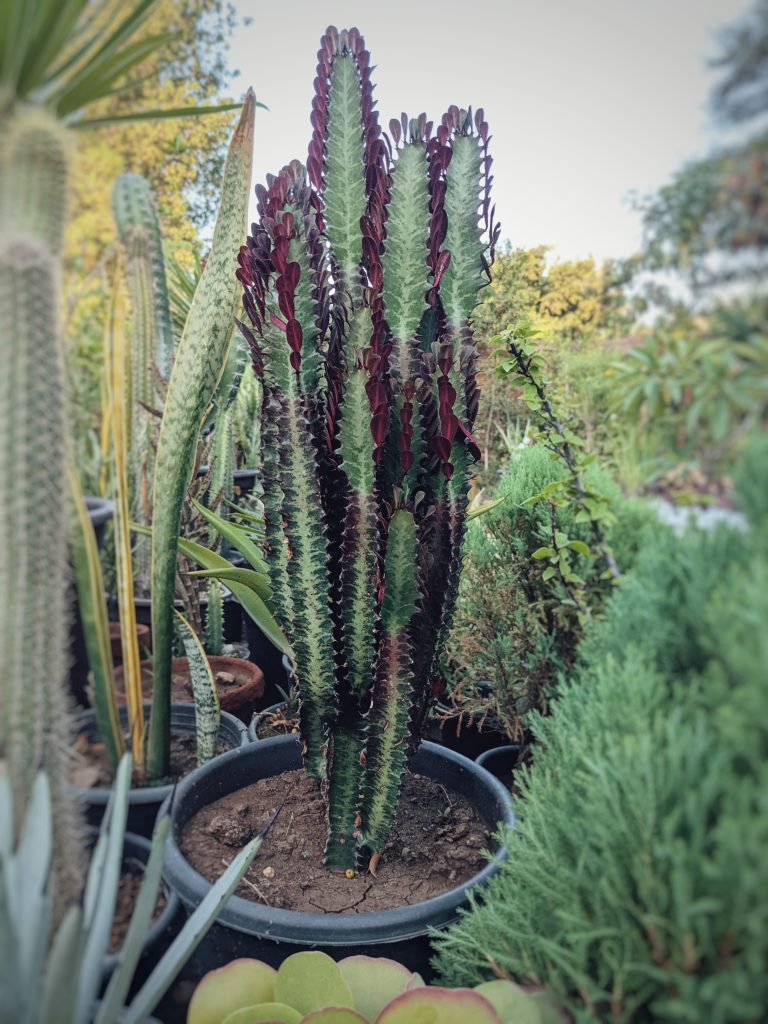
The African milk tree gets its name from its milky sap encased in the plant. As a native to hot African climates, provided enough sun and a little water, it can grow to enormous heights at a rapid pace. The unique shape and interesting deep reds of the leaves make this a great addition to put a bit of variety into your garden.
Hairbrush cactus
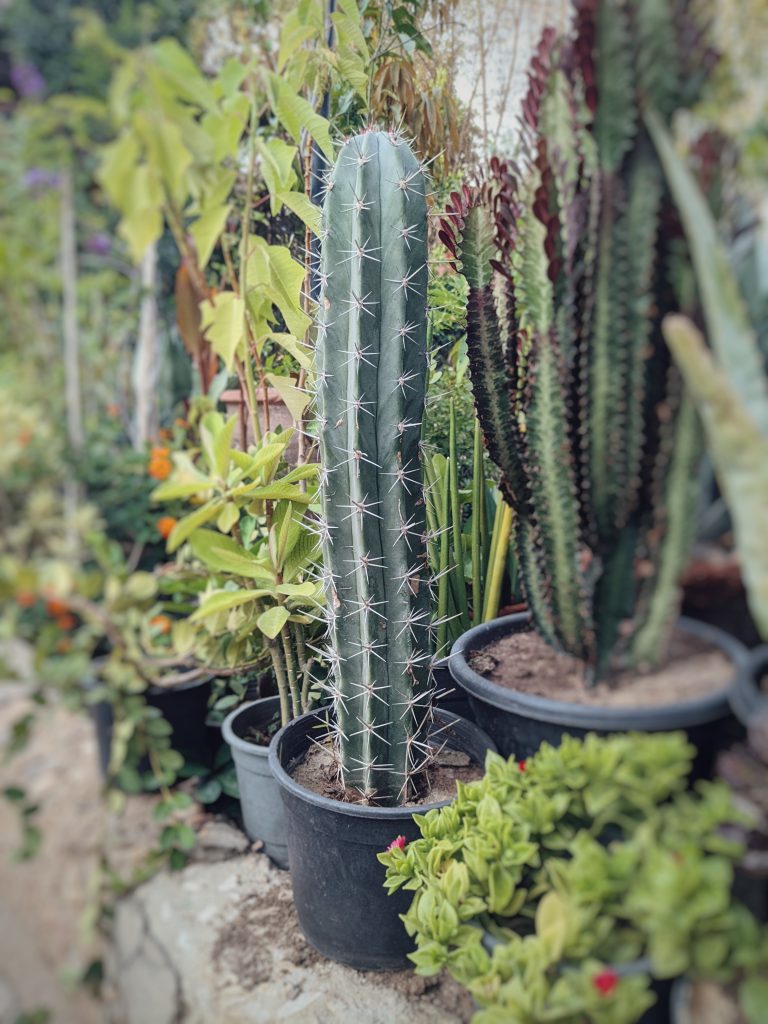
The iconic hairbrush cactus is a great plant for gardeners in the Middle East. This Mexico native, which can grow up to an incredible fifteen metres, has become synonymous with the Wild West through movies with large expanses of the Nevada desert hosting these often colossal plants. Native Americans once used the plant as hair combs, giving it its name, and it has also been used in native cuisine and medicines for millennia. With a good amount of sun and the occasional watering, the hairbrush cactus is a perfect plant to keep in the region.
Aeonium
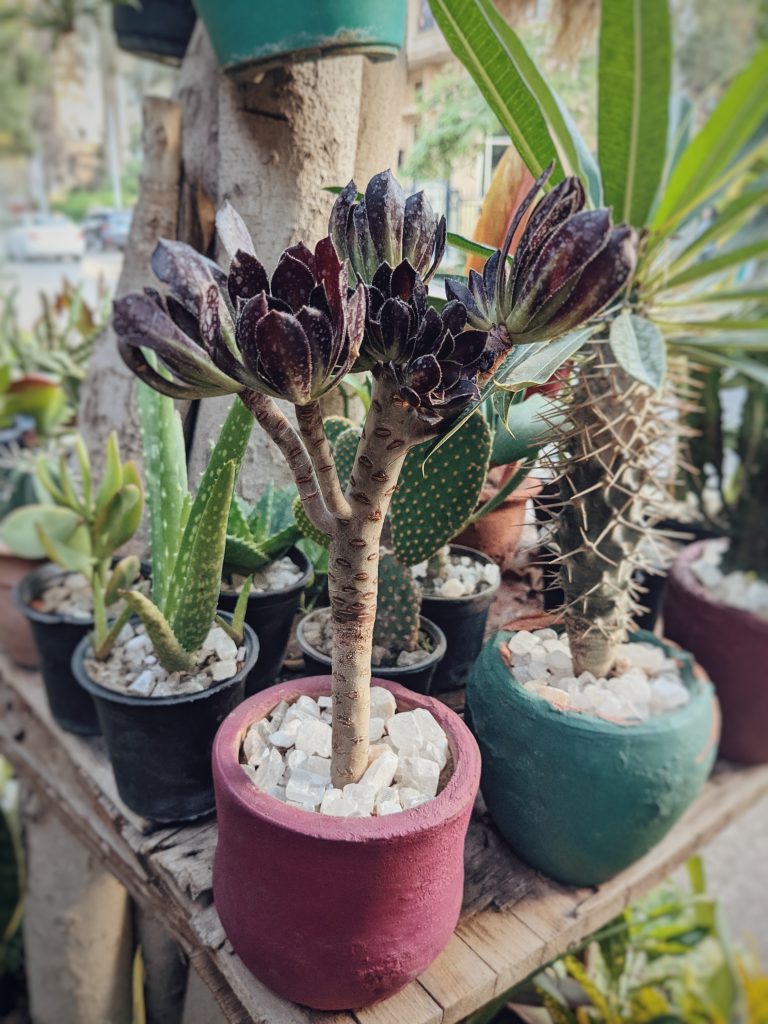
Aeonium is an interesting looking and versatile plant perfect for hot Middle Eastern climates. While it flourishes in full sun, the plant can also cope with more shaded areas, and can be a very easy plant to maintain if you avoid overwatering it. While the leaves create a beautiful almost rose-like structure, the plants also occasionally produce flowers.
Bunny ears
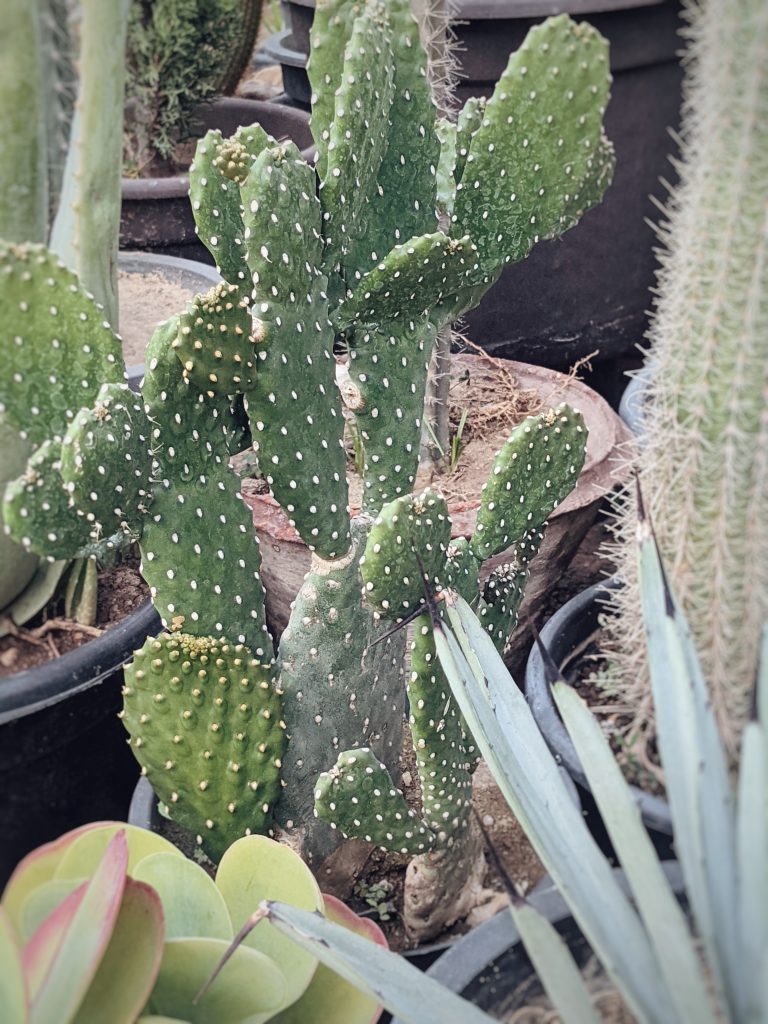
This iconic cactus is a great plant for the hot and sunny climates you get in the Middle East. Needing little water, bunny ears is a great plant for those who have trouble keeping their plants adequately watered as it can go for months without water. Being a native to the deserts of Mexico, it thrives in hot weather, but can also be grown on a sunny windowsill if it gets at least six hours of direct sun a day. As with most cacti though, be sure not to overwater.
Vinca
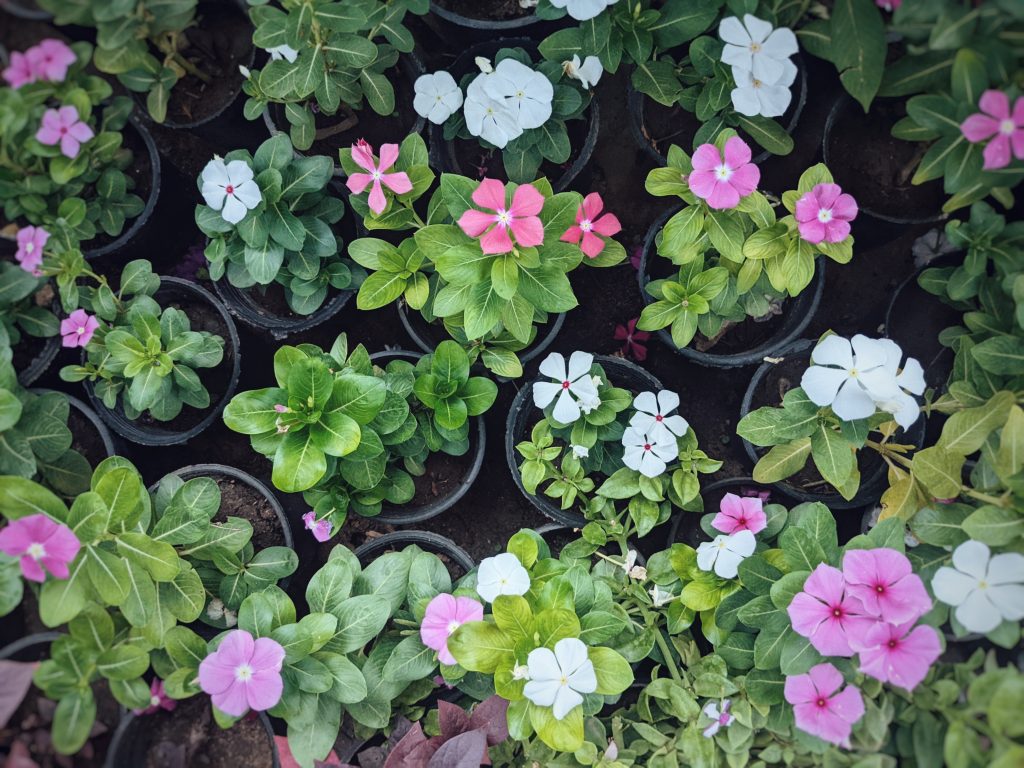
The vinca or periwinkle is a great flowering plant for hot climates and harsh sun. Vinca plants can grow into large expansive bushes that flower for most of the year. Once established, vinca plants can be a colourful addition to any garden that are resistant to hot spells and difficult to kill off.
Thevetia
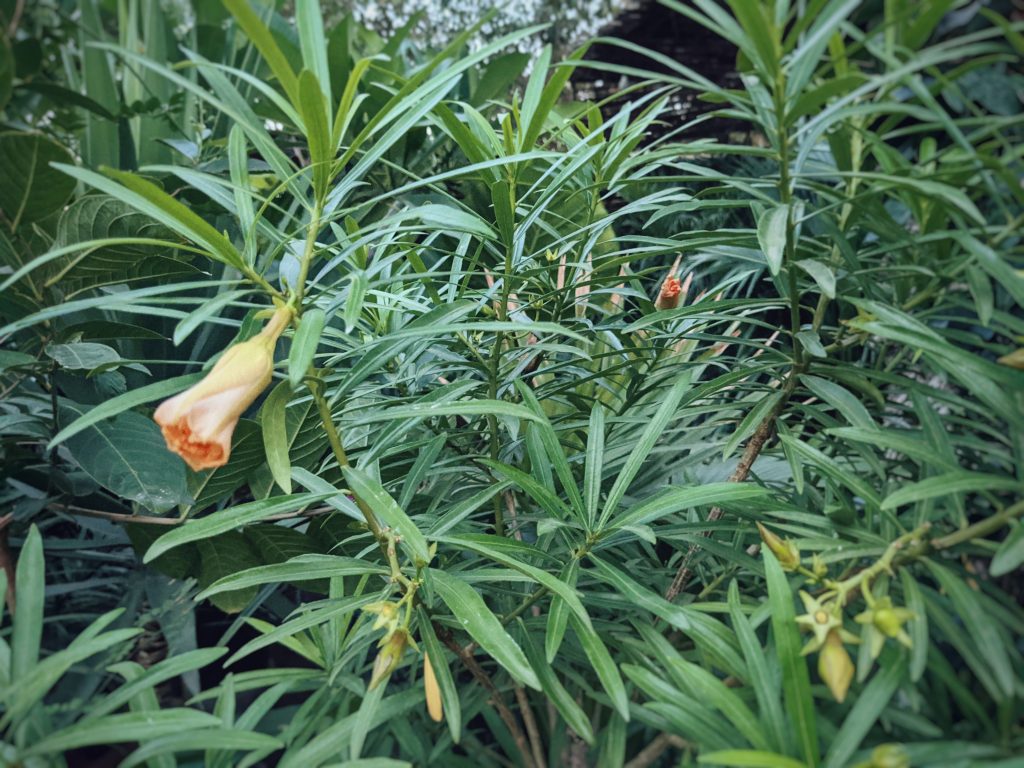
With its delicate thin leaves and colourful fluted flowers, the thevetia is a great tree that loves the sun and can also be grown in a pot. Also known as the be-still tree, the thevetia is a great plant for both shade and introducing colour into your garden. Thankfully, the plant loves the sun, but should be watered well in the hot summer months.
Madagascar palm
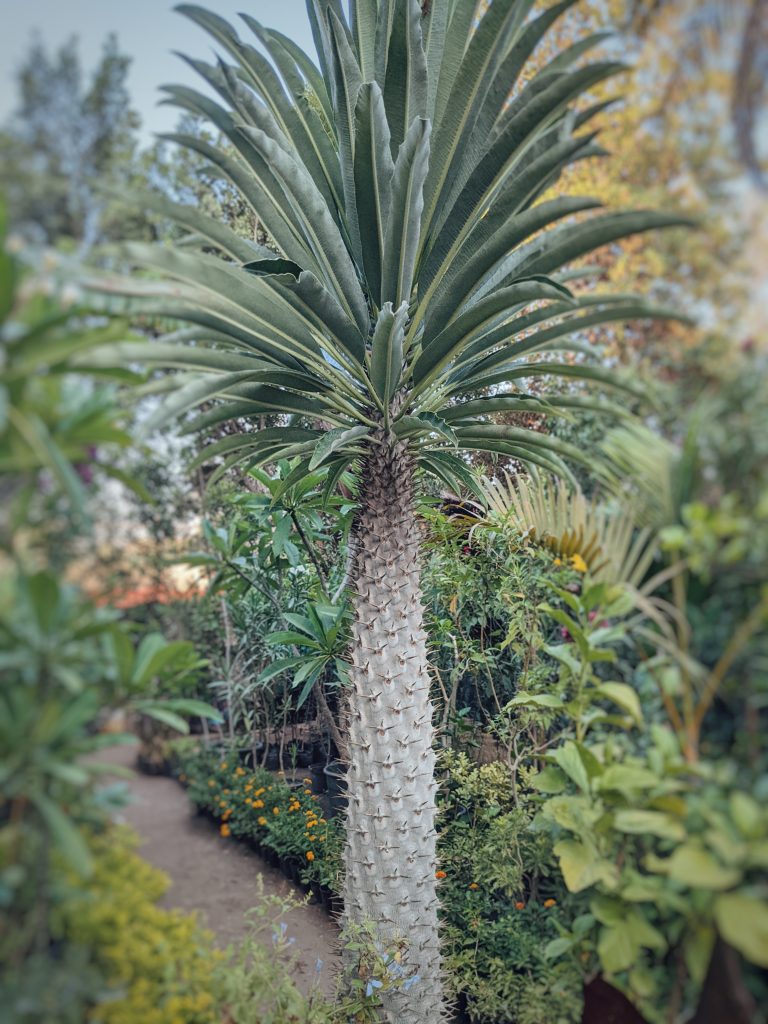
The Madagascar palm native to, you guessed it, Madagascar, is an incredibly unusual-looking plant that grows effortlessly in hot Middle Eastern climates. With a decent amount of sun and little watering, the plant is very easy to maintain. While its prickly trunk is to be handled with caution, as a potted plant on a sunny balcony or planted in the ground in a garden it works great, assuming there are no children running around liable to hurting themselves.
Arabiam jasmine
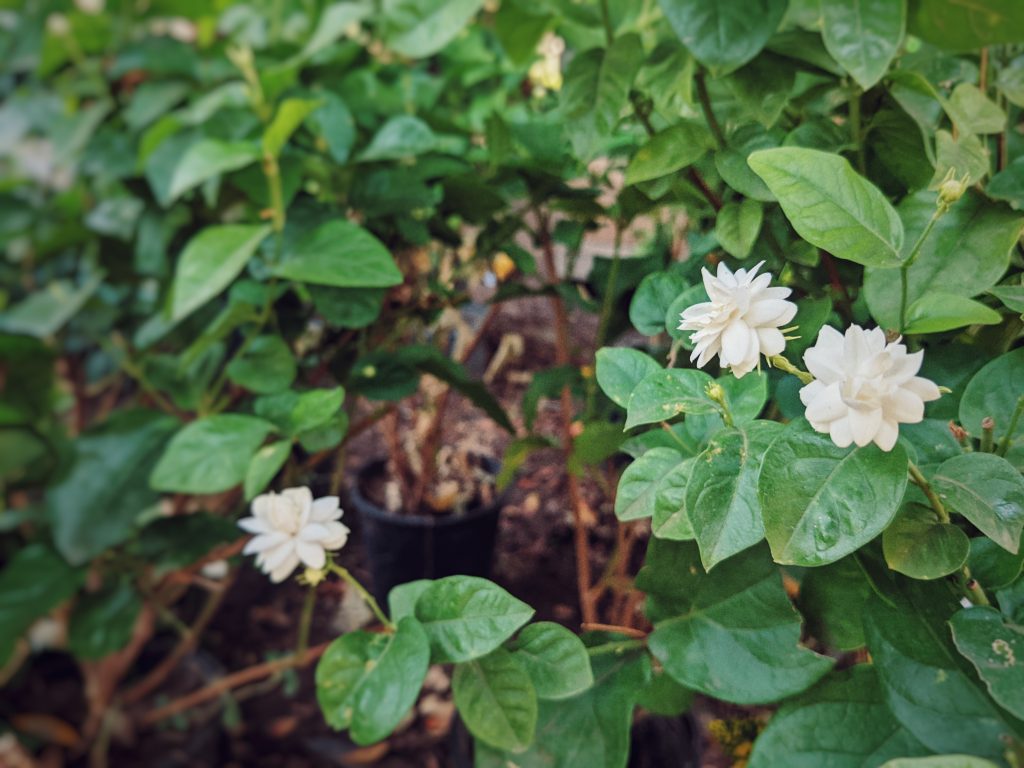
The heavenly smell of these small bright white flowers makes a great addition to any sunny balcony or garden. Flourishing in both pots and in the ground, Arabian jasmine loves the sun but also needs regular watering.
Bougainvillea
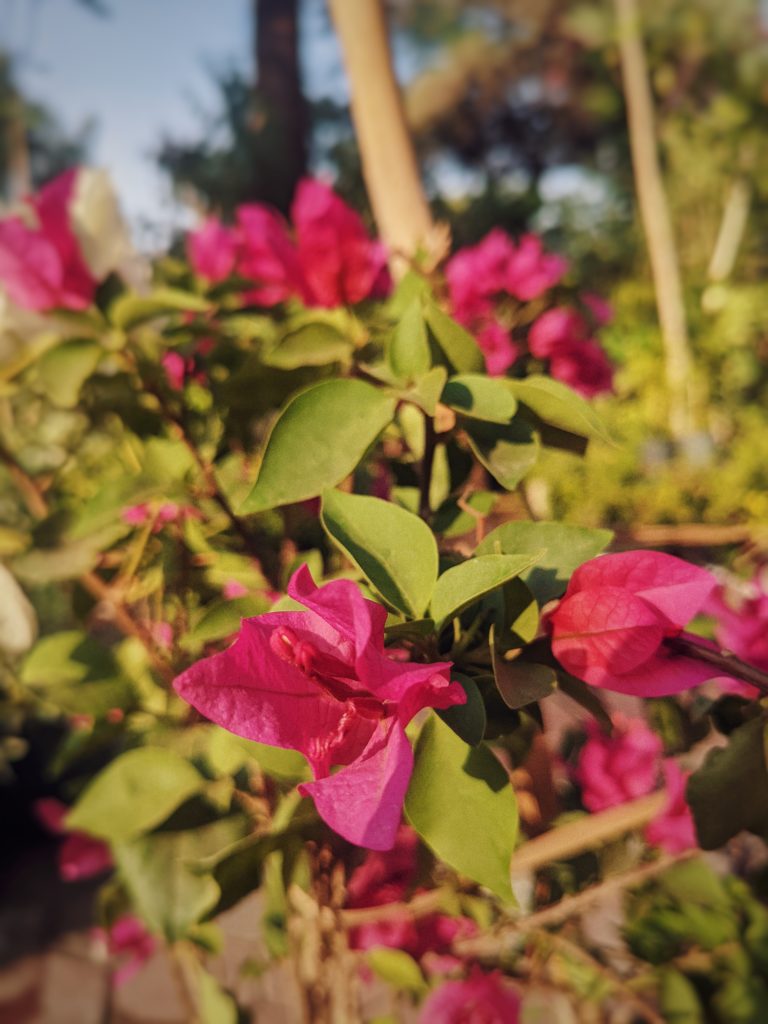
Bougainvillea is also known in Arabic as gohanameya, which roughly translates as ‘that which is from hell‘. It is said that it gets its Arabic name from its ability to grow in extreme heat with little surface water, like in hell, in addition to its beautiful and alluring flowers, which on closer examination have no smell, much like the temptation but ultimately unfulfilling nature of sin.
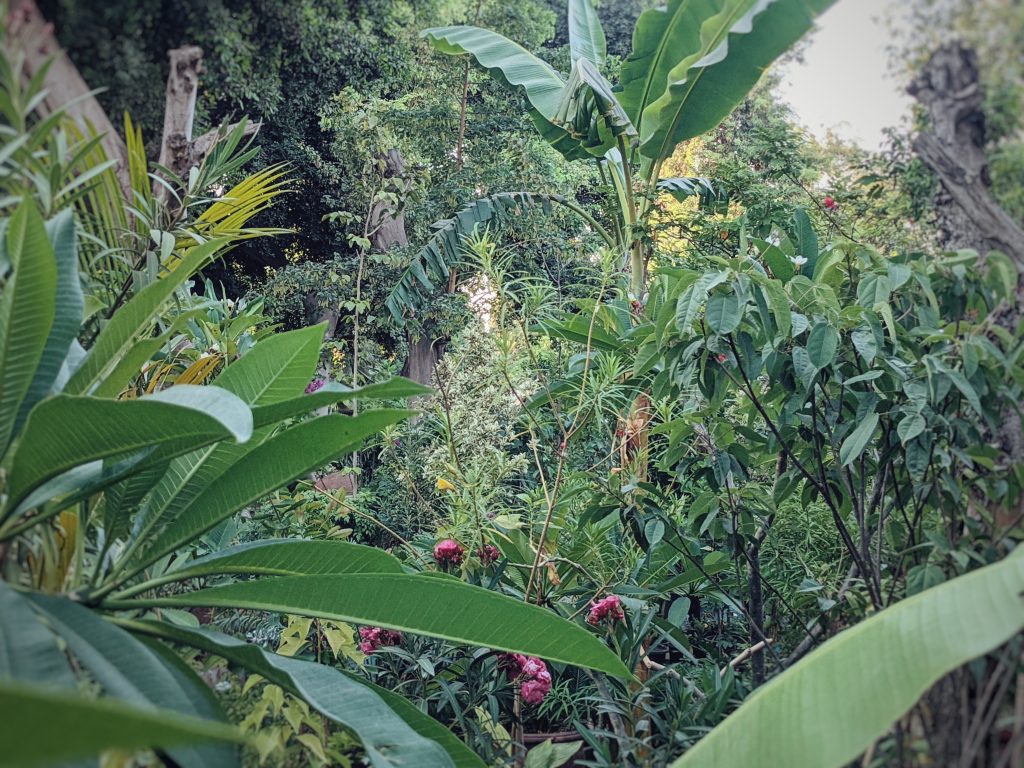
Too much water, too little water, too much sun, too little sun, wrong type of soil, wrong type of pot; there’s much to learn about gardening and one could spend years researching the ins and outs of how to be a successful gardener in the often-tricky climate of the Middle East. However, we learn mostly through trail and error, and there’s no better time than the present to start giving gardening a go, or as a Chinese proverb states, while ‘the best time to plant a tree was twenty years ago, the second best time is now‘.
WE SAID THIS… Everything You Need To Know About Dubai’s Vertical Farm


